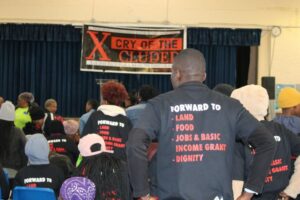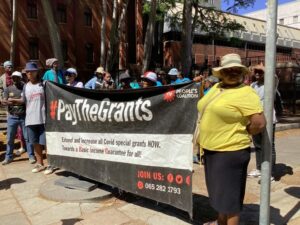
Murineni Katalia Ligavha waited over 27 years of her life to be finally recognised as a woman, a gender she believes she was born to embrace. Throughout those years, the soft-spoken Ligavha was referred to as male, which made her feel uncomfortable.
From rural Nzhelele, outside of Thohoyandou in Limpopo, Ligavha is a transgender woman but lived more than two decades of her life identified as a man, until recently when the home affairs department changed her identity document from male to female.
A transgender woman is someone who was assigned male at birth but identifies and lives as a woman. The World Health Organisation identifies transgender people as those whose gender identity, gender expression, or behaviour differs from what is typically associated with their sex assigned at birth.
Born male, Ligavha has now fully transitioned into a woman. She knew from an early age that she was destined to live as female. Though she has identified as female from her primary school days, her birth certificate and identity document (I.D.) still referred to as a man.
Two-year wait for new I.D
Ligavha, who now works and lives in Pretoria, approached home affairs on 4 April 2023 in her home town of Biaba in Nzhelele, to change the gender markers on her birth certificate and I.D. She was told that the process would take less than 6 months but she waited over two years.
“More than 20 years on earth, my South African I.D. finally matches the person I have always known myself to be. After 2 years, 1 month and 23 days of waiting, the Department of Home Affairs has finally updated my gender marker. It is a small line on the ID card, but for someone like me it changes everything,” says Ligavha.
She resorted to the courts to force home affairs to finally update her documents. “I called, emailed and even visited the offices but I received no answers. In the end, I had to hire a legal representative to send a formal letter; only then did the process finally began to move,” says Ligavha.
Challenges faced by transgender women
Ligavha says that on top of many challenges she faces daily as a transgender woman, she has become tired of having to constantly explain herself. “I am not just celebrating visibility but I am celebrating validation, legal recognition. A quiet, internal sigh of relief that I no longer have to explain, defend, or justify my identity every time I hand over my Identity document. My journey here has not been simple; I have had to navigate a world that was not designed for me,” says Ligavha.
WHO indicates that some of the challenges faced by transgender women globally include that they are 13 times more likely to be living with HIV compared to other reproductive-age population groups, and that there is a high prevalence of mental health issues in the transgender community.
Difficult childhood
Ligavha told Elitsha that growing up she always knew that she was a girl and that made her childhood difficult as people insisted on referring to her as ‘he’. “Growing up, I did not have the luxury of just being myself. I knew I was different, but the world often treated that difference as something to be corrected or ignored. Bathrooms were not built for me; school sports didn’t include me and university residences reminded me daily that I did not quite ‘fit’,” she says.

Yonela Sinqu, a communications officer at Sisonke National Movement in South Africa, says that it is important for transgender people to have an identity document which reflects their preferred gender. “This is key as the transition places the individual in the preferred gender. Carrying a document which defies their identity undermines their right to dignity and association. An identification document also opens one up to certain biases and should that not be corrected it fuels those biases,” says Sinqu.
Sinqu told Elitsha that it is dehumanising to force individuals to carry personal documents which misidentify their gender. “It is imperative for gender markers to be corrected as per the person’s identity to encourage social cohesion,” explains Sinqu.
Ligavha says that since the update of her I.D. she is glad that she no longer has to feel shamed. “I posed as fraud throughout my life because of the mismatch, which made it a nightmare always when I got stopped at any roadblocks and had to produce my driver’s licence. But at last this year, I finally celebrate with a legal document that affirms my gender, that recognises me for who I am, not who the system assumed me to be. That small piece of plastic now carries the weight of a very long journey, one filled with courage, setbacks, healing, and hope,” explains Ligavha.
Ligavha says that her journey should serve as encouragement to fellow transgender people who are still waiting for the same correction to their documentation.
Motivation to fellow transgender women
“But my story is not just about me alone, it is about every trans person still waiting, still unheard, still stuck in that painful space between who they are and what their documents say. Many will not have access to legal help; some will give up after months of silence. So, to those still fighting for recognition, I see you. I have been where you are and I promise your identity is not less valid just because it has not been processed yet,” says Ligavha.
Attempts to get comment from the Department of Home Affairs on their process for correcting a person’s registered gender failed. Their website states that persons who have undergone a sex change operation or medical treatment resulting in their gender reassignment can have their gender changed – with the submission of two supportive medical reports.
“To our leaders and departments, do better because transgender people deserve more than silence and red tape. We deserve systems that reflect the diversity of the people they serve,” says Ligavha.





